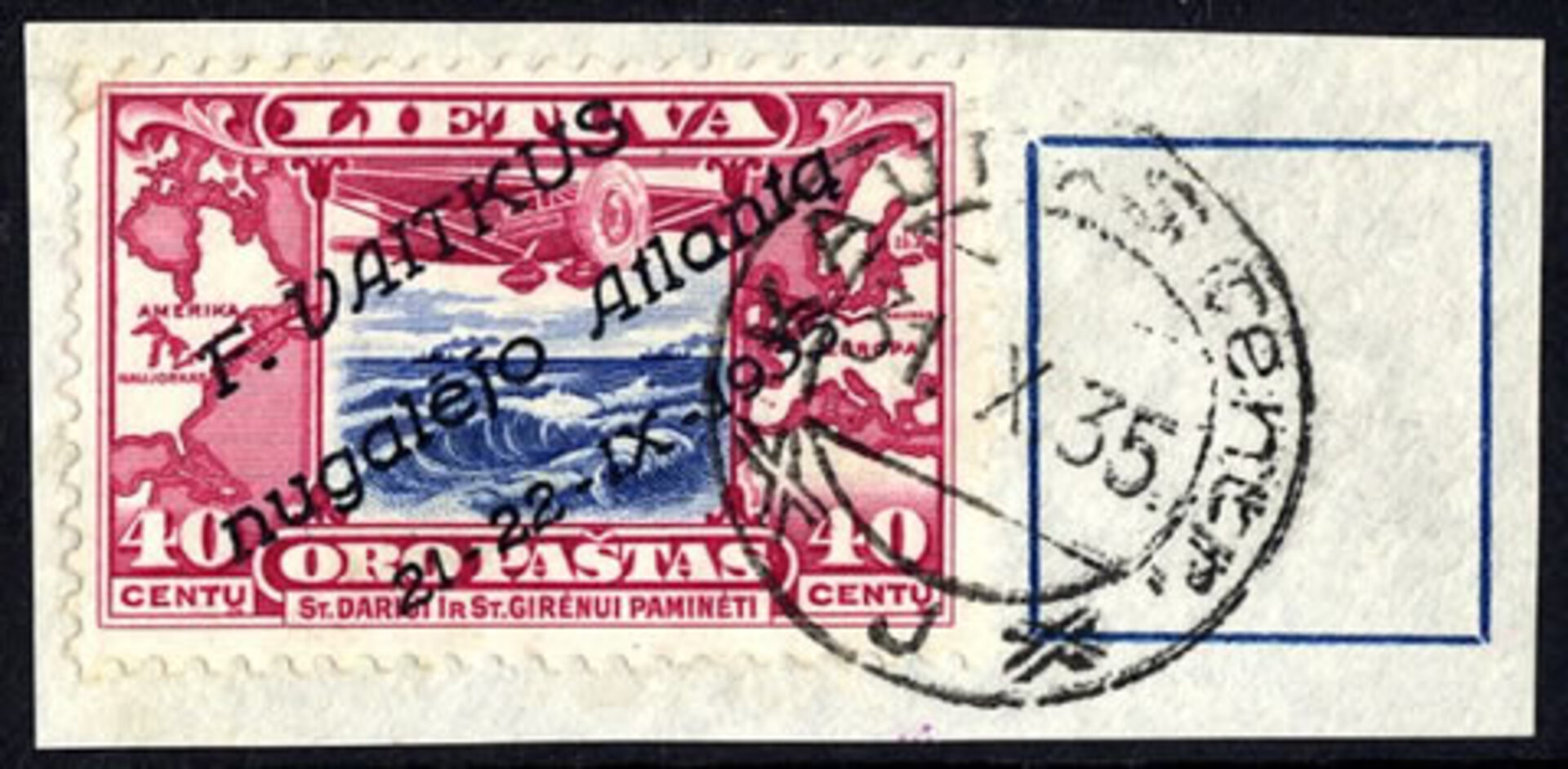The 1920s and early 1930s saw the expansion of Pioneering Flights extend to non stop distance records and international non stop flights. Darius and Girenas were US Pilots of Lithuanian origins and on July 15, 1933, they flew across the Atlantic Ocean on route to Kaunas, Lithuania covering a distance of 3,984 miles without landing, in 37 hours and 11 minutes (107.1 mph) before perishing in a crash in Germany just 350 miles short of their target.
As far as the distance of non-stop flights was concerned, their result ranked second only to that of Russell Boardman and John Polando, and ranked fourth in terms of duration of flight at the time. Although Darius and Girenas did not have navigational equipment and flew under unfavourable weather conditions, the flight was one of the most precise in aviation history. It equaled, and in some aspects surpassed, Charles Lindbergh's classic flight. Lituanica also carried the first Transtlantic air mail consignment in history.
On July 19, the German plane "Derluft", carried the bodies of the pilots back to Lithuania where their funeral was afforded official national mourning.
A few months after the Lituanica tragedy, such was the enthusiasm for flying that some prominent members of the Chicago Lithuanian community discussed the possibility of financing another transatlantic flight, and enough funds were raised to purchase a faster and more modern Lockheed Vega.
The aircraft was christened Lituanica II on Sunday, April 22, 1934. The aircraft was extensively refitted and when the following Spring the original pilot originally unexpectedly resigned, the Chicago organisers turned to Felix Waitkus. A US born pilot of Lithuanian parents, who had enlisted in the army in 1928, and after graduating from advanced pilot's training school, was commissioned a second lieutenant in the Air Corps.
Waitkus arrived at Floyd Bennett Field in New York in May 1935 where no transatlantic flights were allowed owing to adverse weather conditions, (wind speed and direction and ice formation played a much greater role in early aviation than modern times). It was not until four months later, on the evening of September 20, that the Meteorological Service gave him a favourable report and encouraged with this news, Waitkus decided to fly.
The next day, September 21, at 6:45 in the morning, Lituanica II headed for Europe. Unfortunately, Waitkus had to fight the worst possible weather conditions, flying through rain, fog, and icy conditions, so that most of his navigation had to be by his new radio compass. More than once he noticed ice forming on the wings and had to descend to a lower altitude until it all thawed off. Waitkus was helped considerably by hourly broadcasts from an Irish radio station. He learned that Dublin was fogged in, as well as all areas heading east as far as the Baltic Sea. He knew that he could not make it to Kaunas due to his low fuel supply, and being exhausted after the 23-hour single handed struggle decided to come down in an open field in Cloongowla at Ballinrobe, County Mayo, Ireland. The plane was extensively damaged but Waitkus came away without injury. Lituanica II was crated for shipment to Lithuania, where it would be restored. By ship and by train he made his way to Kaunas where he was given a hero's welcome.
The 1920s and early 1930s saw the expansion of Pioneering Flights extend to non stop distance records and international non stop flights. Darius and Girenas were US Pilots of Lithuanian origins and on July 15, 1933, they flew across the Atlantic Ocean on route to Kaunas, Lithuania covering a distance of 3,984 miles without landing, in 37 hours and 11 minutes (107.1 mph) before perishing in a crash in Germany just 350 miles short of their target.
Felix Waitkus was the only pilot to fly across the North Atlantic in 1935 and even though he came down in Ireland and not in Kaunas, he was entered in aviation's history books for being the sixth pilot to fly solo across the Atlantic.
Waitkus was recalled to active duty in the Army Air Corps in 1940, serving as the chief test pilot at the Boeing Aircraft Co. in Seattle, testing bombers and was recalled again to serve in the U.S. Air Force during the Korean War.


 General
General
 General
General
 General
General